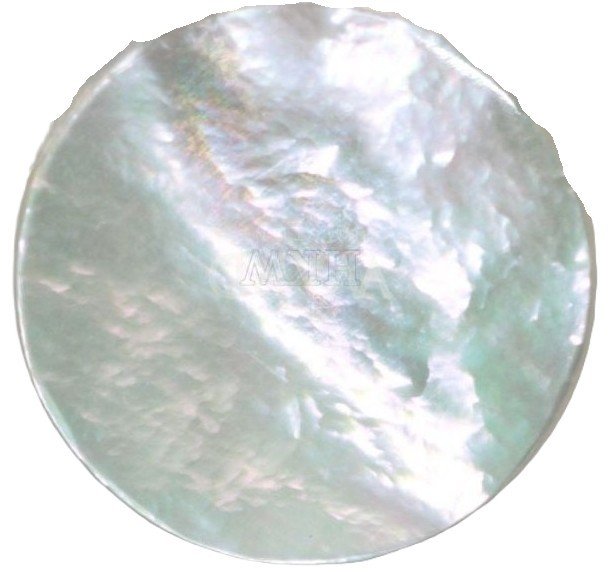
Mother of Pearl
Mother of Pearl, also called nacre, captivates with its iridescent beauty and smooth, pearly lustre. Though not a traditional gemstone, it forms as an organic material when certain molluscs develop a protective inner shell layer.
Origins and Composition
Several mollusc species, including pearl oysters, abalone, and nautilus, produce Mother of Pearl. It primarily consists of calcium carbonate in the form of aragonite, layered with an organic protein called conchiolin. This structured layering creates its shimmering effect, as light refracts and reflects between these layers to produce a captivating play of colours.
The name “Mother of Pearl” stems from the ancient belief that pearls grew inside mollusc shells, nurtured by the nacre within.
Locations
Mother of Pearl thrives in oceans and seas worldwide, wherever molluscs that produce it flourish. Major sources include the South Sea islands, Australia, Japan, the Philippines, and various coastal regions. Its type, colour, and quality vary based on the species and environment.
Archaeological Finds and Historical Records
Humanity has prized Mother of Pearl for millennia. Archaeological evidence reveals its use in jewellery, tools, and decorative objects across ancient cultures. Burial sites suggest its ritual significance.
Ancient civilisations in Egypt, Greece, and Rome adorned themselves with Mother of Pearl, associating it with wealth, status, and protection. Its popularity persisted, with the Victorian era embracing it for jewellery, buttons, and intricate inlay work.
Folklore, Legends, and Tales
Many cultures link Mother of Pearl to the moon, water, and feminine energy, viewing it as a symbol of purity, innocence, and tranquillity.
Some traditions credit it with enhancing intuition and psychic abilities, while others believe it attracts luck, prosperity, and protection. Its deep connection to the sea ties it to themes of emotion, fluidity, and the subconscious.
Links with Astrology and the Chakra System
Astrology associates Mother of Pearl with the Moon, reflecting its ties to lunar energy, emotions, and intuition. The Moon shapes inner worlds, guiding feelings and subconscious awareness, making Mother of Pearl’s calming energy a perfect match.
Neptune, linked to spirituality, dreams, and intuition, also resonates with Mother of Pearl’s ability to enhance perception and deepen spiritual connection.
In the chakra system, Mother of Pearl aligns with the sacral chakra (Svadhisthana), located in the lower abdomen and governing creativity, passion, emotions, and sexuality. Its lunar and water associations strengthen this energy. Many also link it to the heart chakra (Anahata), recognising its power to balance emotions and soothe the spirit.

Mother of Pearl
Discover the luminous beauty of Mother of Pearl—symbol of protection, calm, and intuition. Ideal for elegant jewellery and spiritual balance.
